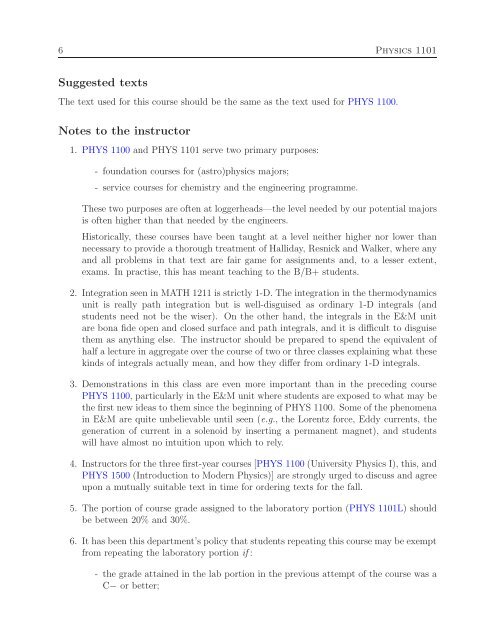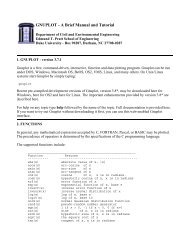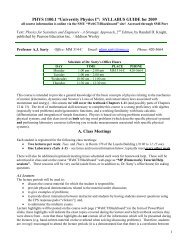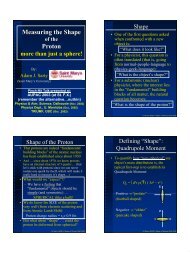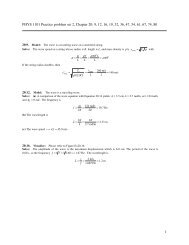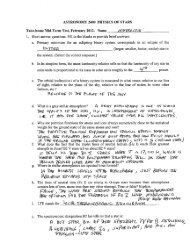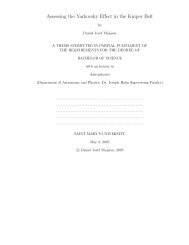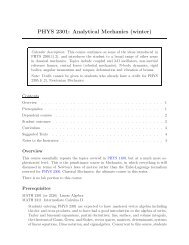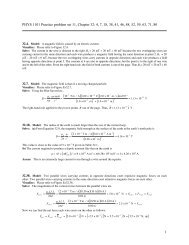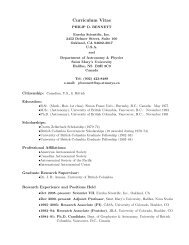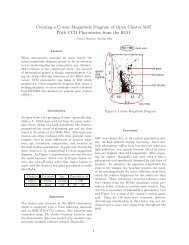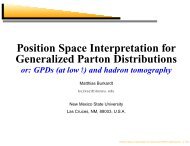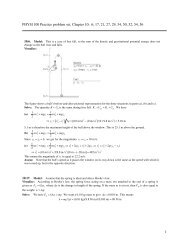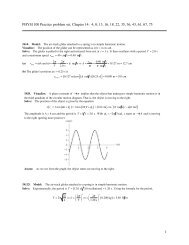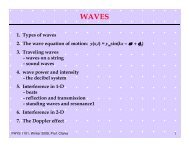PHYS 1101: University Physics II (winter)
PHYS 1101: University Physics II (winter)
PHYS 1101: University Physics II (winter)
Create successful ePaper yourself
Turn your PDF publications into a flip-book with our unique Google optimized e-Paper software.
6 <strong>Physics</strong> <strong>1101</strong><br />
Suggested texts<br />
The text used for this course should be the same as the text used for <strong>PHYS</strong> 1100.<br />
Notes to the instructor<br />
1. <strong>PHYS</strong> 1100 and <strong>PHYS</strong> <strong>1101</strong> serve two primary purposes:<br />
- foundation courses for (astro)physics majors;<br />
- service courses for chemistry and the engineering programme.<br />
These two purposes are often at loggerheads—the level needed by our potential majors<br />
is often higher than that needed by the engineers.<br />
Historically, these courses have been taught at a level neither higher nor lower than<br />
necessary to provide a thorough treatment of Halliday, Resnick and Walker, where any<br />
and all problems in that text are fair game for assignments and, to a lesser extent,<br />
exams. In practise, this has meant teaching to the B/B+ students.<br />
2. Integration seen in MATH 1211 is strictly 1-D. The integration in the thermodynamics<br />
unit is really path integration but is well-disguised as ordinary 1-D integrals (and<br />
students need not be the wiser). On the other hand, the integrals in the E&M unit<br />
are bona fide open and closed surface and path integrals, and it is difficult to disguise<br />
them as anything else. The instructor should be prepared to spend the equivalent of<br />
half a lecture in aggregate over the course of two or three classes explaining what these<br />
kinds of integrals actually mean, and how they differ from ordinary 1-D integrals.<br />
3. Demonstrations in this class are even more important than in the preceding course<br />
<strong>PHYS</strong> 1100, particularly in the E&M unit where students are exposed to what may be<br />
the first new ideas to them since the beginning of <strong>PHYS</strong> 1100. Some of the phenomena<br />
in E&M are quite unbelievable until seen (e.g., the Lorentz force, Eddy currents, the<br />
generation of current in a solenoid by inserting a permanent magnet), and students<br />
will have almost no intuition upon which to rely.<br />
4. Instructors for the three first-year courses [<strong>PHYS</strong> 1100 (<strong>University</strong> <strong>Physics</strong> I), this, and<br />
<strong>PHYS</strong> 1500 (Introduction to Modern <strong>Physics</strong>)] are strongly urged to discuss and agree<br />
upon a mutually suitable text in time for ordering texts for the fall.<br />
5. The portion of course grade assigned to the laboratory portion (<strong>PHYS</strong> <strong>1101</strong>L) should<br />
be between 20% and 30%.<br />
6. It has been this department’s policy that students repeating this course may be exempt<br />
from repeating the laboratory portion if :<br />
- the grade attained in the lab portion in the previous attempt of the course was a<br />
C− or better;


